
The East Coast Parkway is an expressway that runs along the southeastern coast of Singapore. It is approximately 20 kilometres (12 mi) in length. As of July 2022, it is Singapore's third-longest expressway.
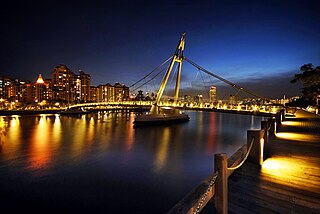
Kallang is a planning area and residential zone located in the Central Region of Singapore.
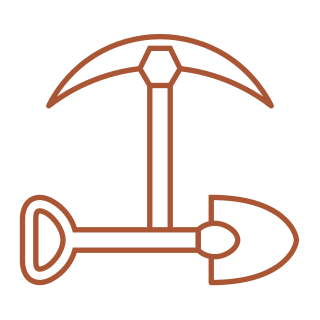
The Labour Front is a defunct political party in Singapore that operated from 1955 to 1960.

Tanjong Pagar is a historic district located within the Central Business District of Singapore, straddling the Outram Planning Area and the Downtown Core under the Urban Redevelopment Authority's urban planning zones. The district has a rich history and is known for its cultural and architectural landmarks, making it a popular tourist destination.
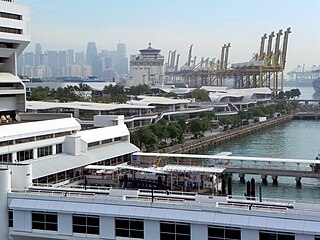
Bukit Merah, also known as Redhill, is a planning area and new town situated in the southernmost part of the Central Region of Singapore. the planning area borders Tanglin to the north, Queenstown to the west and the Downtown Core, Outram and Singapore River planning areas of the Central Area to the east.

Clifford Pier was a former pier located beside Collyer Quay at Marina Bay within the Downtown Core of the Central Area, Singapore. The pier, which opened in 1933, ceased operations in 2006.

The Woodlands Checkpoint is one of Singapore's two land border checkpoints, connecting ground traffic with Malaysia. It services the vehicular traffic along with pedestrians that goes through the Johor–Singapore Causeway. The only other Singapore land border checkpoint services the Malaysia–Singapore Second Link.
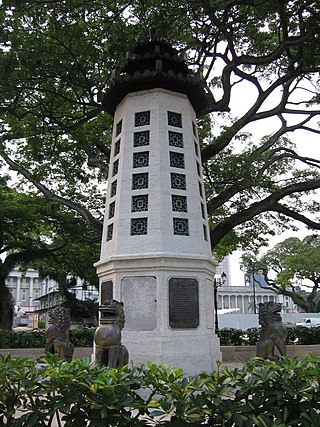
The Lim Bo Seng Memorial is an octagonal pagoda-like war memorial at Esplanade Park, Singapore. It was erected in 1954 in honour of the late Lim Bo Seng for his heroic acts and selfless sacrifice during the World War II. The war memorial is the only structure in Singapore that commemorates an individual's efforts in World War II and was gazetted as a national monument on 28 December 2010.
The following lists events that happened during 2007 in the Republic of Singapore.

Voco Orchard Singapore is a voco hotel in located at Orchard Road, Singapore. It is the first voco-branded hotel by InterContinental Hotels Group in Southeast Asia.

Hillview is located in Bukit Timah, Northwest Singapore. The neighbourhood overlooks Bukit Timah Hill, hence its name.

Lim Ho Puah was a Hokkien merchant who was born in Amoy in 30 December 1841 and came to Singapore at an early age. He was employed by Wee Bin & Co., where his abilities were noticed by his employer, Wee Bin. He later married Wee Bin's daughter. He was the founder and senior partner of the Wee Bin Steamship Line and other concerns.

Sikhism in Singapore has its roots in the military and policing forces of the British Empire. Currently, there are 12,000-15,000 Sikhs in Singapore. There are 7 gurdwaras along with a missionary society, a welfare society, two youth organizations and two sports clubs. Most Sikhs today are from the Jat community.

Singapore has had two tramway networks forming part of its public transport arrangements. Both networks were relatively unsuccessful and short lived.
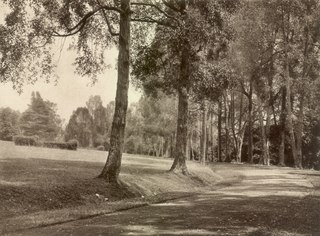
Tyersall Park is an estate in Singapore, bound by Holland Road and Tyersall Avenue, and near the Singapore Botanic Gardens. Previously a private land belonging to the Sultan of Johor from 1862, some portions of it had been acquired by the Government of Singapore in 1990 and in 2009 respectively.

Istana Tyersall is a demolished historical palace that used to be in the former Tyersall Park bound by Holland Road and Tyersall Road near the Singapore Botanic Gardens in Singapore. The land it was formerly built on is currently restricted from the public.

Alkaff Gardens was a Japanese-style park once located east of the Bidadari Cemetery from 1930 to 1964, on the present site of Cedar Girls' Secondary School at Bidadari, Singapore. In the 1930s, the park was a popular leisure destination for dating couples and families. It featured as its centrepiece an artificial lake, which was drained in 1964.
The first fortifications of Singapore consisted of batteries built in the early 19th century to protect the harbour and city. After this there were two main phases of building.

















